Eagles, renowned for their formidable hunting prowess and majestic presence, are apex predators that have captivated human imagination for centuries. Their keen vision, powerful talons, and swift flight make them some of the most efficient hunters in the avian world. Here’s a look at the Top 10 Hunting Eagles in the World, showcasing their unique attributes and the roles they play in their ecosystems.
LIST OF: Top 10 Hunting Eagles in the World
1. Golden Eagle (Aquila chrysaetos)
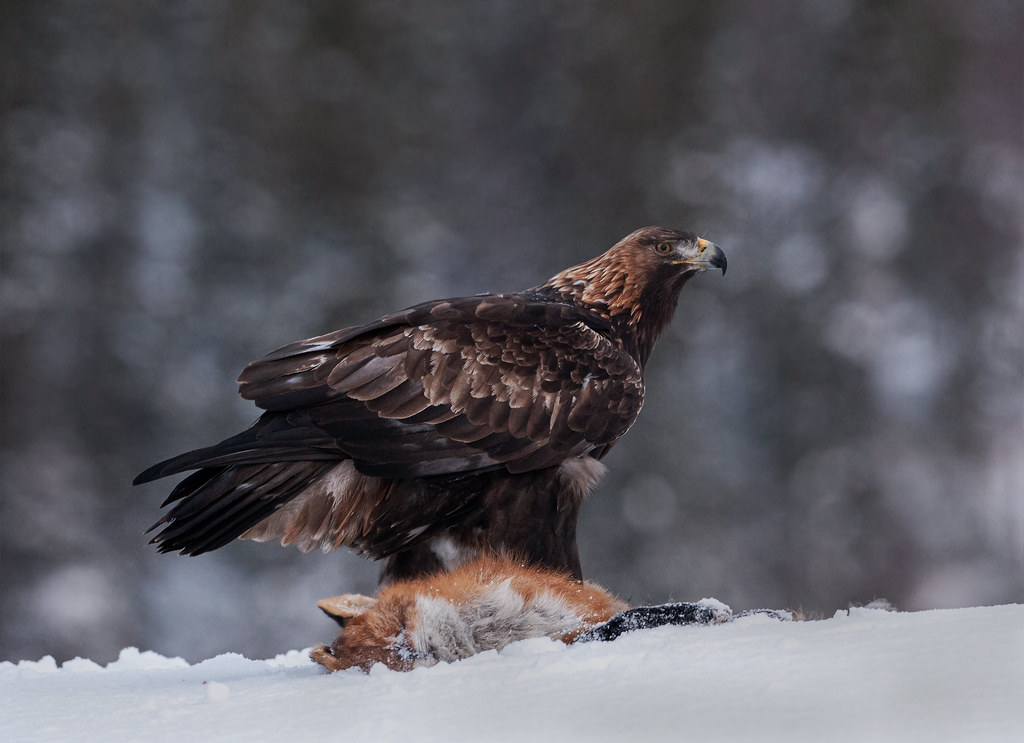
The Golden Eagle is one of the most iconic and widespread eagles, found across the Northern Hemisphere in regions ranging from North America to Eurasia. Renowned for its agility and strength, this eagle primarily preys on medium-sized mammals like rabbits, hares, and even small deer. Its impressive wingspan, which can exceed 7 feet, allows it to soar effortlessly while scanning the ground for potential prey. The Golden Eagle’s hunting strategy involves high-speed dives from great heights, demonstrating both precision and power.
2. Bald Eagle (Haliaeetus leucocephalus)
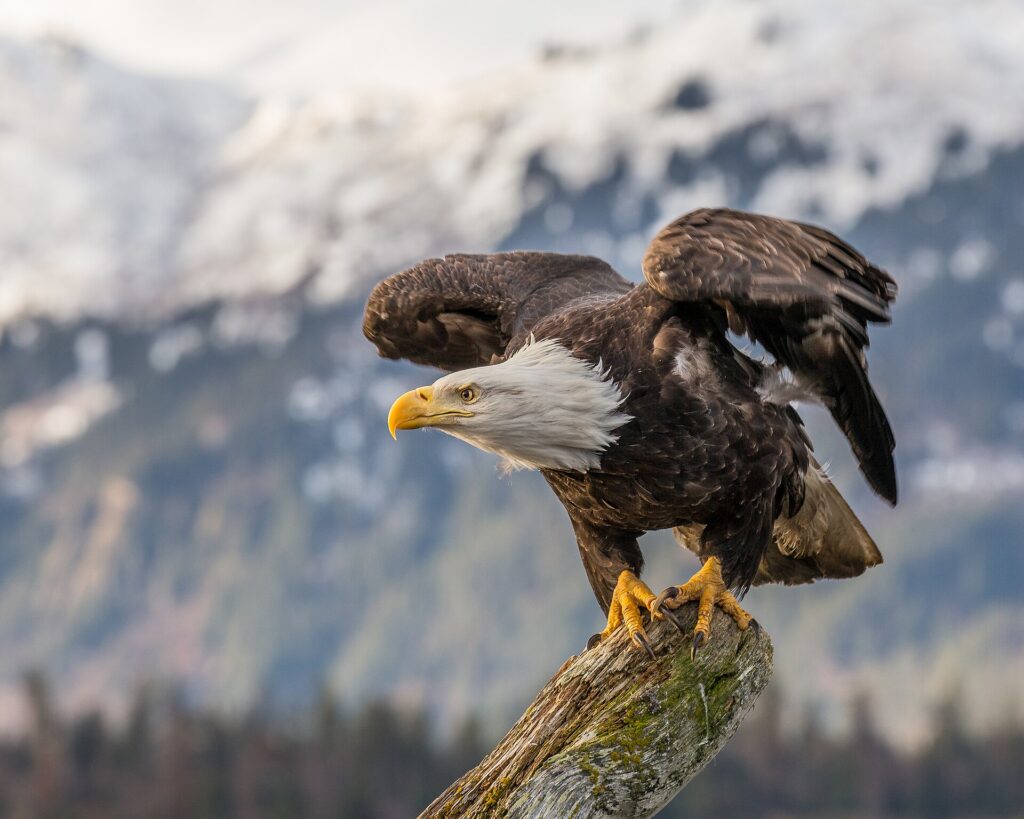
The Bald Eagle, the national bird of the United States, is not just a symbol of American freedom but also a formidable hunter. Found predominantly in North America, its diet consists mainly of fish, which it catches with its sharp talons. Bald Eagles are known for their impressive nesting sites, often built near large bodies of water. Their hunting technique involves soaring high above the water and then executing a powerful plunge to snatch fish from the surface.
3. Harpy Eagle (Harpia harpyja)
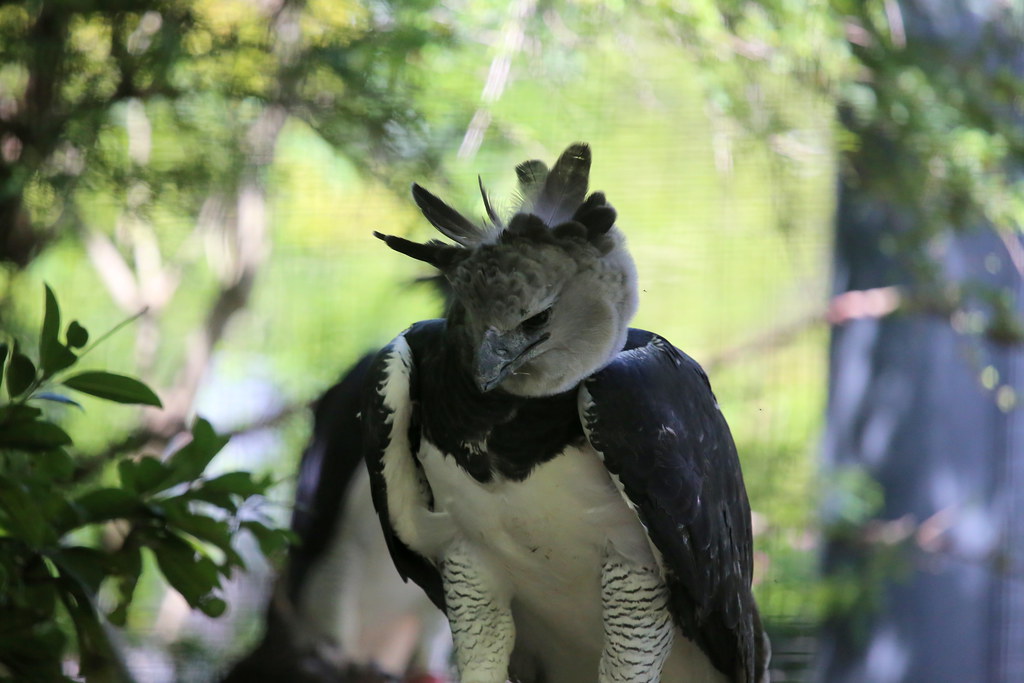
The Harpy Eagle, one of the largest and most powerful eagles, inhabits the tropical rainforests of Central and South America. With a wingspan of up to 7 feet and talons that rival the size of a grizzly bear’s claws, it is adept at hunting large prey such as monkeys and sloths. Its hunting style involves a stealthy approach followed by a rapid ambush, showcasing its strength and agility. The Harpy Eagle’s large size and powerful build make it a top predator in its rainforest habitat.
4. Wedge-tailed Eagle (Aquila audax)

Native to Australia, the Wedge-tailed Eagle is distinguished by its unique, wedge-shaped tail and impressive size. It preys on a variety of animals, including kangaroos, wallabies, and small marsupials. The Wedge-tailed Eagle is a versatile hunter, capable of adapting its hunting strategies to different environments. Its soaring flight allows it to spot prey from great distances, making it an efficient predator in Australia’s diverse landscapes.
5. Steppe Eagle (Aquila nipalensis)

The Steppe Eagle is a migratory species found across the steppes of Eurasia and parts of Africa. This eagle primarily hunts small mammals, reptiles, and insects. Known for its long migrations, the Steppe Eagle travels vast distances between its breeding grounds in Central Asia and wintering habitats in Africa. Its hunting strategy involves soaring high to survey the ground for prey, demonstrating both endurance and keen eyesight.
6. Sea Eagle (Haliaeetus spp.)

Sea Eagles, a group of eagles within the genus Haliaeetus, are notable for their fishing skills. Different species, such as the White-tailed Eagle (Haliaeetus albicilla) and the Steller’s Sea Eagle (Haliaeetus pelagicus), are found across Eurasia and North America. Sea Eagles primarily feed on fish but will also prey on birds and small mammals. Their powerful talons and sharp beaks are adapted for grasping and tearing apart their aquatic prey.
7. African Fish Eagle (Haliaeetus vocifer)
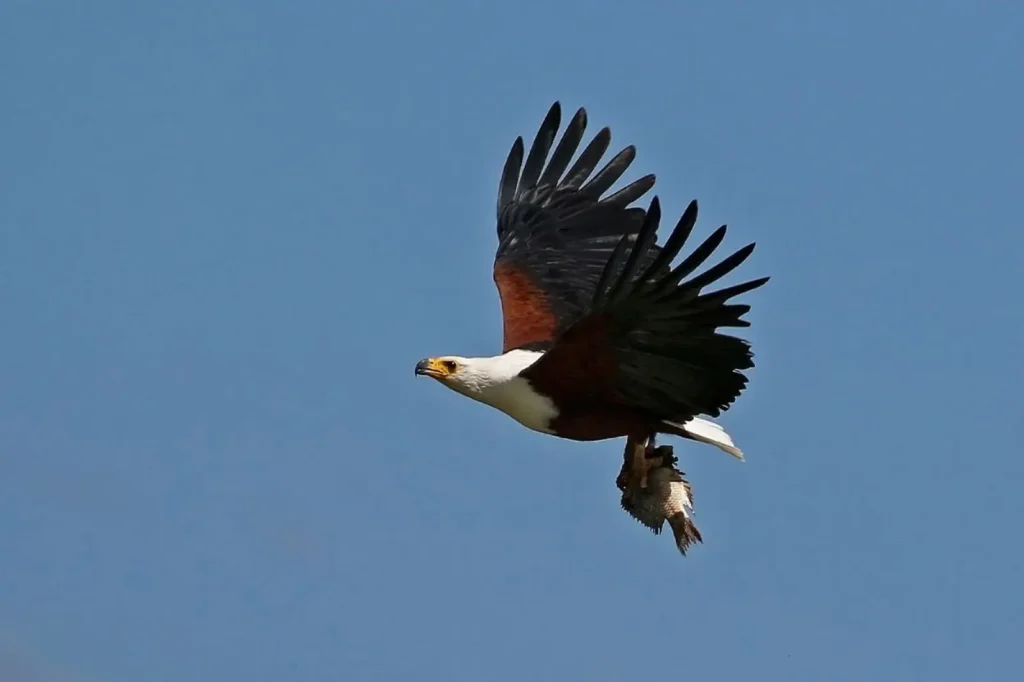
The African Fish Eagle, found throughout sub-Saharan Africa, is a strikingly beautiful bird with a distinctive white head and chest. This eagle is a skilled fisherman, preying on fish found in lakes, rivers, and wetlands. Its hunting technique involves a dramatic plunge into the water to seize fish with its powerful talons. The African Fish Eagle’s haunting call is a familiar sound around African waterways.
8. Philippine Eagle (Pithecophaga jefferyi)

The critically endangered Philippine Eagle is one of the largest and rarest eagles in the world, native to the Philippines. This eagle primarily preys on monkeys, birds, and large insects. With a wingspan of up to 7.5 feet, the Philippine Eagle is known for its impressive size and striking crest feathers. Conservation efforts are crucial for the survival of this magnificent bird, as habitat loss continues to threaten its population.
9. Bonelli’s Eagle (Aquila fasciata)
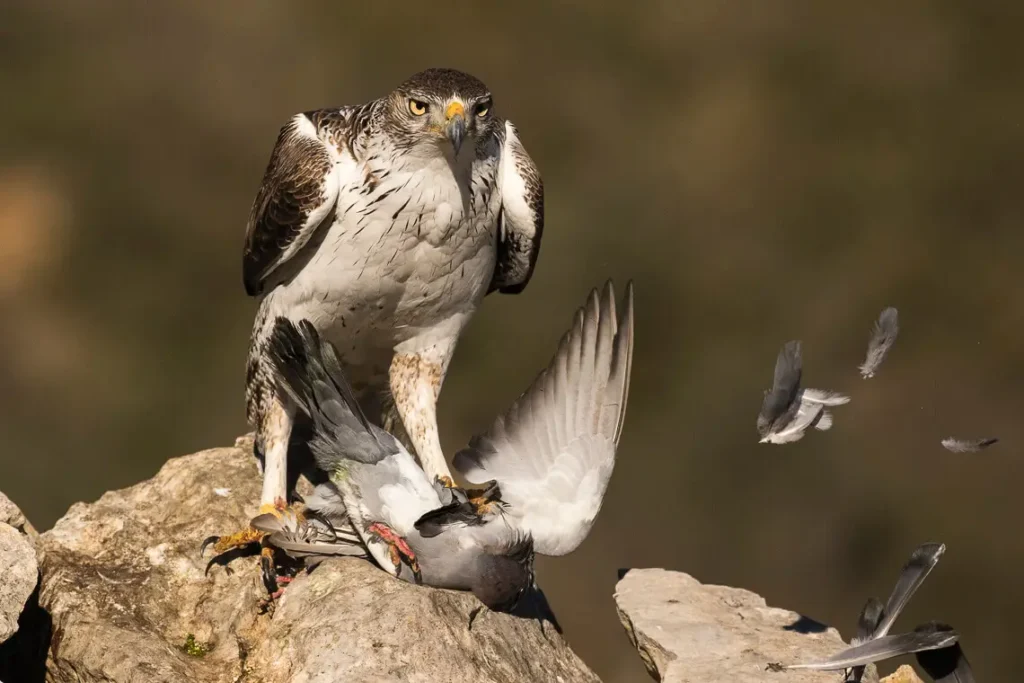
The Bonelli’s Eagle (Aquila fasciata) is a striking bird of prey native to southern Europe, northern Africa, and parts of Asia. Recognizable by its distinctive dark brown plumage, pale head, and bold white streaks on its underparts, this eagle is a skilled hunter of medium-sized mammals, birds, and reptiles. It prefers open and semi-open habitats such as woodlands, scrublands, and rocky hillsides. Bonelli’s Eagles are known for their impressive hunting techniques, which often involve soaring high to spot prey before executing a rapid, controlled dive. Despite their adaptability and wide range, they face threats from habitat loss and persecution, making conservation efforts crucial for their continued survival.
10. Osprey (Pandion haliaetus)

The Osprey (Pandion haliaetus), also known as the sea hawk or fish eagle, is a raptor renowned for its exceptional fishing skills. Found on every continent except Antarctica, the Osprey is easily identifiable by its white underparts, dark brown wings, and a distinctive black eye stripe. This medium-sized eagle specializes in hunting fish, which it catches with remarkable precision using its specially adapted talons that are covered in spiky barbs for a secure grip. Ospreys are often seen near bodies of water, such as lakes, rivers, and coastal regions, where they dive from great heights to snatch fish from the surface. Their remarkable hunting prowess and adaptability have made them a widespread and resilient species, though they still face challenges from environmental changes and habitat disruption.
Conclusion:
From the forests of South America to the steppes of Eurasia and the wetlands of Africa, these Top 10 Hunting Eagles in the World. Each species possesses unique adaptations and hunting techniques that make them masters of their environments. As we continue to study and protect these magnificent birds, we gain a deeper appreciation for their role in maintaining the balance of nature and their enduring allure in the natural world.

























